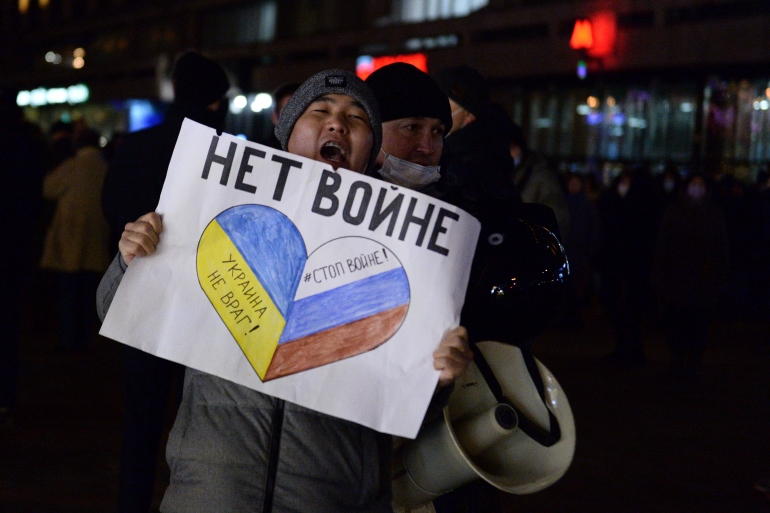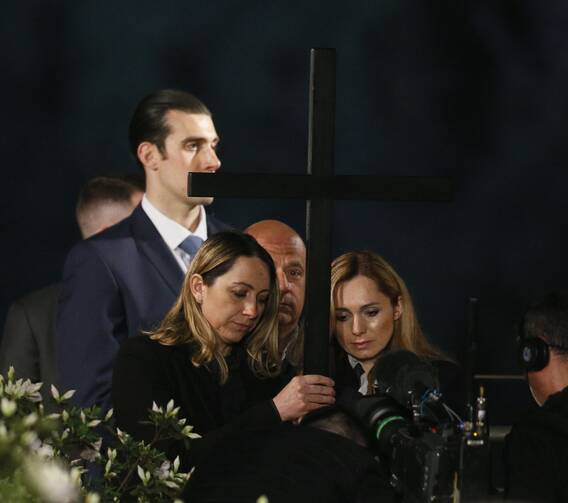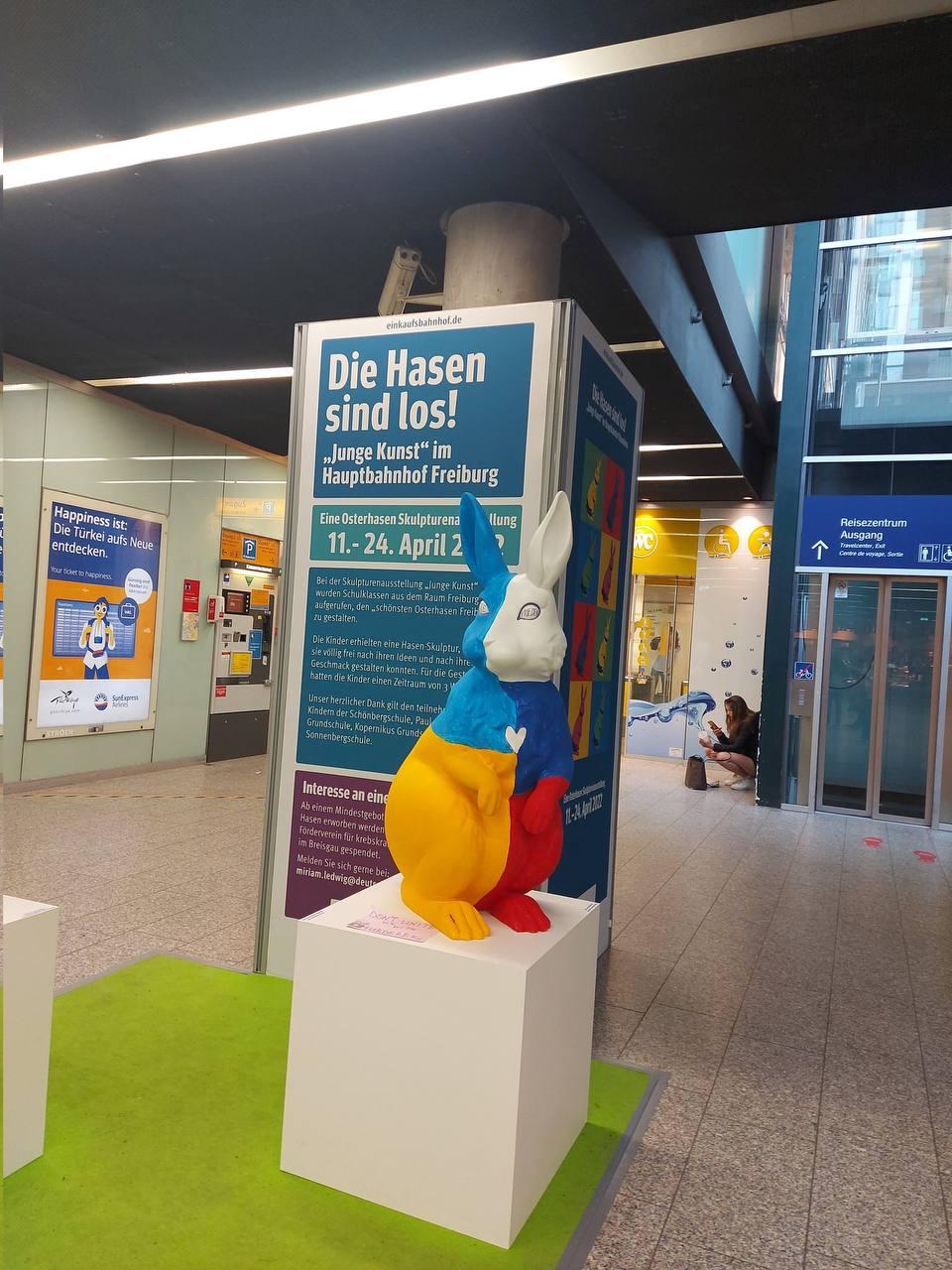
For centuries, Ukraine has been fighting Russian colonialism and expansionism, which, for the modern observer, reached its peak in the current Russian war. As a historical and ideological heir of the Soviet Union, Russia still cherishes the idea of its revival in one form or another. In such a paradigm, the position of Ukraine is at best the position of the exotic periphery – in other words, a classic position of a colony, defining itself only through its dependence on the metropolis.
The West still mostly sees both Ukrainian and Russian nations as largely common so the tragedy of the Russian-Ukrainian war may be also interpreted as a tragedy of the “quarreled family”. And this thesis often implies the support of the pro-Kremlin narrative about “both sides being responsible for the conflict”. Ukrainian culture is often seen through the prism of the “Great Russian culture” which is so well-represented in the West through the means of academic imperialism and propaganda. At the same time, Ukraine as a state is seen through the optics of Soviet (in other words, Russian) colonialism.
Big Brother knows what’s best for you
The Kremlin myth about “fraternal nations” has become so successful that it is still broadcasted by both political and religious figures. Thus, French President Emmanuel Macron called Ukrainians and Russians “brotherly peoples”. This, however, shows the lack of understanding of the Kremlin terminology. However, Russia’s vision of “brotherhood” significantly differs from “fraternité” as one of the major values of the French Revolution. Instead of mutual support and solidarity, it offers submission and silence under the watchful gaze of the “big brother”. As mentioned in Edward Said’s Orientalism, “Every single empire in its official discourse has said that it is not like all the others, that its circumstances are special, that it has a mission to enlighten, civilize, bring order and democracy, and that it uses force only as a last resort. And, sadder still, there always is a chorus of willing intellectuals to say calming words about benign or altruistic empires, as if one shouldn’t trust the evidence of one’s eyes watching the destruction and the misery and death brought by the latest mission civilizatrice.” – and that is exactly how Russia legitimates ins invasion of Ukraine.
In his commentary on Russia’s intervention in Ukraine, Pope Francis accepted that countries had a right to defend themselves, but said the general abandonment of peace was a problem. As a follow-up to that thesis, Ukrainian and Russian women held a cross together during the Via Crucis (Way of the Cross) on the evening of Good Friday in Rome as a gesture of reconciliation. This became one of the most visible peace-keeping initiatives of the Western world. The very morphology of the ritual entails sinners’ sincere remorse and longing for forgiveness. However, in this war, Russia is far from both. How is it possible to forgive those who do not seek forgiveness?

It is said in the Epistle to the Philippians: Fulfil ye my joy, that ye be likeminded, having the same love, being of one accord, of one mind [Phillipians 2:2]. Also, in his address to the disciples, Jesus says: If any man will come after me, let him deny himself, and take up his cross, and follow me. [Matthew 16:24].
However, in the theater of violence, the rapist and the victim always play different roles. Therefore, Ukrainians and Russians cannot share the same way of suffering and the same cross. The cross of the murderer and the cross of the innocently murdered, the cross of Caine, and the cross of Abel are different crosses. After over two months of a repeated boody intervention, Ukrainians and Russians cannot be of one accord and of one mind.
As it is mentioned in the Gospel, I say unto you, that likewise, joy shall be in heaven over one sinner that repenteth, more than over ninety and nine just persons, which need no repentance. [Luke 15:7]. However, Russia shows no signs of repentance, trying to mollify the West about the disparity between Crime and Punishment. Longing to destroy the very idea of Ukrainian identity, committing war crimes, looting Ukrainian homes and museums, appropriating Ukrainian culture, and stealing Ukranians’ right for life. And still, Russians still blame Ukraine for “hatred”, “aggression” and “russophobia” and broadcast this message in the West. Unfortunately, it is hard to remain empathetic and politically correct to the nation that kills, rapes, loots, forcefully deports over a million Ukrainians to distant areas of Russia in the far east, sets up “filtration camps” on the occupied territories, and russifies abducted Ukrainian children who “do not speak Russian of the proper level to attend Russian schools”.
In Russia, the Christian concept of brotherhood and sisterhood is also displaced by the narrative of Soviet propaganda since Russia and the rest of the world have different visions of christian virtues. This i.a. may be illustrated by the hysteria of the Russian Orthodox church which has alway supported Putin’s regime and now is blessing Russian troops in their “sacral” mission to “wipe out the Ukrainian nation”. While the Kremlin is trying to portray Russia’s war of annihilation as a “holy war”, in fact, it still remains a colonial war. Therefore, mentioning Ukraine and Russia as “brothers who share the same language, culture and religion”, heads right into the trap of Russia’s imperial narrative, which undermines the very existence of Ukraine as a sovereign state.
What can love and solidarity between the aggressor and the defender look like?

Another visual symbol of “peace-keeping” is a sculpture of an Easter bunny in Freiburg, Germany. The bunny is painted into the colors of Ukrainian and Russian flags united with a peaceful heart, and the word Frieden (peace) is written in its eyes. Ironically, Russia also declares its longing for peace. Such visualizations (as well as the ones with people wrapped in Ukrainian and Russian flags kissing) continue vague rhetorics about “Ukrainian crisis” or “conflict” in Ukraine as a more “politically correct” substitute Russia’s full-scale invasion of Ukraine and its genocide of the Ukrainian people. Perhaps, that is because after centuries of humiliation and oppression, Ukraine still does not look as a classical victim of a genocide: scared and mortified, raped covered in blood and tears. Instead, after all the atrocities of “ordinary Russians”, it puts up a fight and defends its dignity. This sometimes provokes various forms of victim-blaming: for not trying enough, not suffering enough, not dying enough.
On the bunny’s pedestal, Ukrainian refugees left the note writing “Don’t unite us with our murderers”. Indeed, both countries should be interested in “stopping the bloodshed”. However, it is always the oppressor who must seek for a compromise, not the victim. Love conquers all, but Russia is hungry for pain and blood, not for love.
Any excuse will serve a tyrant
Being ambivalent and controversial, such initiatives erode the blame and leave the space for manipulation, the Russian project of the so-called “denazification” of Ukraine means its liquidation as a sovereign state. This plan is set down in Russia’s program article “What Russia has to do to Ukraine”, published by RIA Novosti: to destroy Ukraine as a sovereign state. In fact, Russia does not need any rationalization of its aggression: it could use any excuse to seize Ukraine and justify its crimes. It will not disdain “nazism”, “demilitarization”, “protecting the Russian-speaking population” or whatever it might be.
The lamb and the constantly hungry wolf cannot love each other without the risk of one being eaten alive since Russia’s vision of love has an aftertaste of sadism. However, when the lamb is not helpless enough, and when it starts fighting for its life, the Aesop’s matrix does not work. The lamb stands up and fights for its right to live.
The vague rhetoric about “both countries responsible for the conflict” and “there are victims on both sides” can be also traced in the artistic sphere. In Germany, public intellectuals wrote a letter to Chancellor Olaf Scholz urging not to supply heavy weapons to Ukraine in order to “avoid the increasing number of victims among the civil population and damage to the infrastructure”. However, the conversations of Russian troops with their mothers and partners, intercepted by the Security Service of Ukraine, demonstrate enjoyment of horror and admiration of crime and celebration of impunity so even if Ukraine remains unarmed, Russia will not be interested in peace and keep threatening the war with WWIII.
Russia leaves room for pacifism, showing its disinterest in peaceful talks. Since the Kremlin succeeded in selling the idea of “special military operation” to the Russian society, it is hard to stop the vicious circle of violence. The worse things in Russia are, the more promotion of war and violence intoxication “ordinary Russians” express. This may be illustrated by the trust in President Vladimir Putin which has risen to 81.6% from 67.2% since Russia’s full-scale invasion of Ukraine and the fact that 78.9% of Russians approve Putin’s actions regarding Ukraine.
Not all sufferings are equal
The talks about both nations suffering from the war also help to devalue the burden of war, which Ukrainians must bear. In an official Statement from the Festival de Cannes on the situation in Ukraine, it is said that official Russian delegations will not be welcomed nor the presence of anyone linked to the Russian government will be accepted. The festival team salutes the courage of all those in Russia who have taken risks to protest against the assault and invasion of Ukraine. Among them are artists and film professionals who have never ceased to fight against the contemporary regime, who cannot be associated with these unbearable actions, and those who are bombing Ukraine. However, the very presence of Russian moviemakers on the international festival still legitimizes the Russian aggression (even if they are in opposition to the government) since art cannot exist beyond politics.
The world keeps admiring Russian propagandist Marina Ovsyannikova who, after her on-air performance on Russian TV (however, there are no live streams in Russia), surprisingly escapes with a $280 fine and later gets a job at Die Welt while in Russia you can face a jail term of up to 15 years for spreading the news about the war in Ukraine. While Ukrainians lose their bombs and flee their homes under the enemy shellings and the children live in the bomb shelters and basements, Russians can’t buy luxury goods or travel abroad. However, not all sufferings are equal.
Russian liberals keep repeating that “ordinary people are not responsible for Putin’s war”. They tend to distance themselves from the government and its actions, despite the fact that they still support the Russian economy with their taxes and therefore, fund the war. They “take the blood out” from their flag, they chose the No to war motto. However, what is the alternative to war? “Peace at any cost” (read: peace on Russia’s terms) which implies the annihilation of Ukraine as a sovereign state? Frozen conflict with the constant threat of escalation? Or the complete victory of Ukraine with the full deoccupation of its internationally recognized territories? Not all Russians are ready to answer that.

